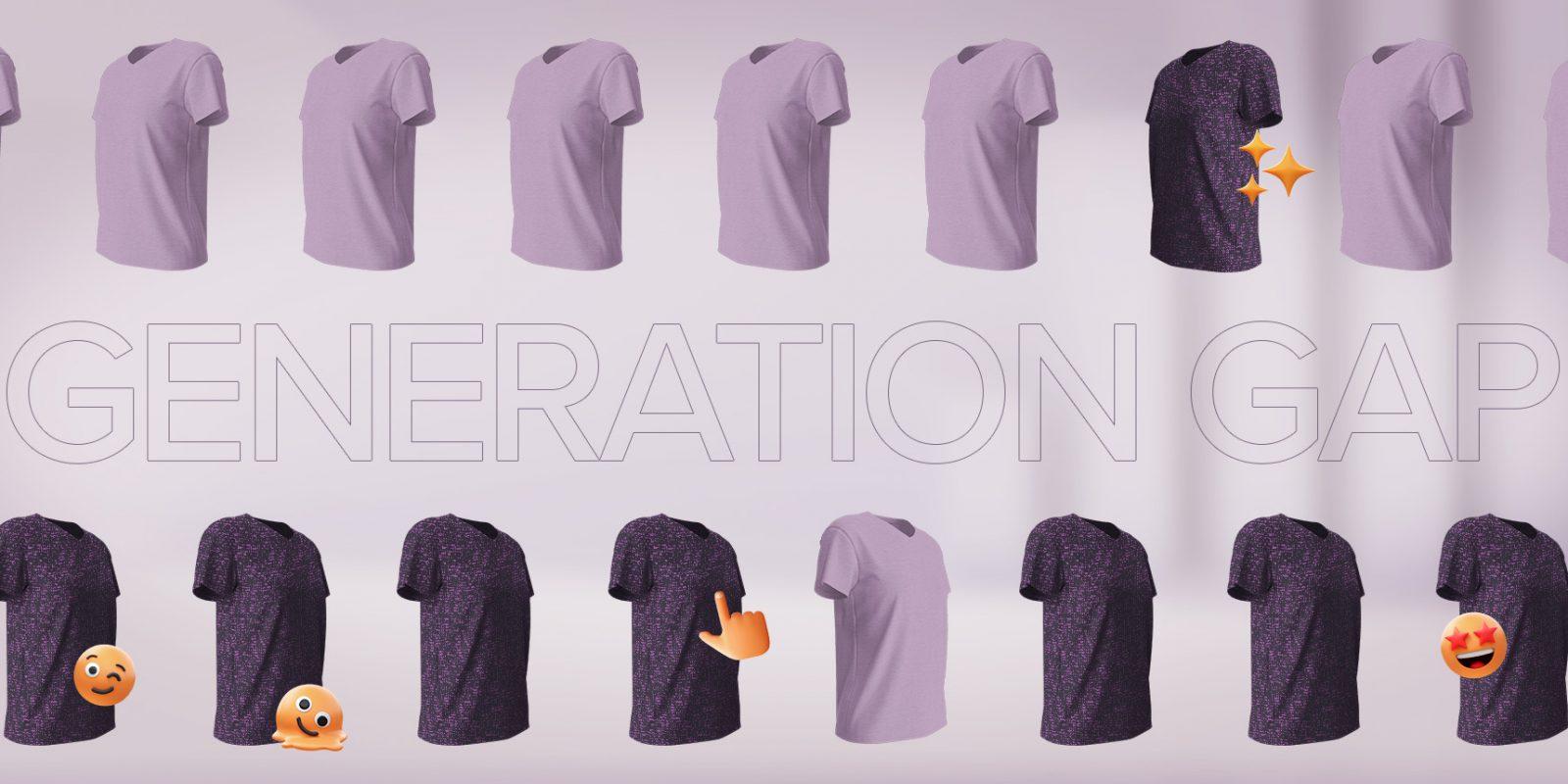Last Updated on: 26th May 2024, 07:41 pm
Personalized marketing is more than just delivering online advertising that strikes a chord. It’s about understanding the motivations and tendencies of individuals and then meeting their preferences in design, social engagement, marketing, sales channels, delivery methods, and after-sales care. Ads are, of course, one critical element of this whole, so we’re taking a look at different aged customers to show how you can deliver “a smarter dress code” for online fashion campaigns across the generation gap.
- Gen Z, Millennials, and Gen X are all digitally aware generations but have different motivations and expectations.
- Sustainability is front of mind for younger generations, but this is not always reflected in the purchases they make.
- Identifying a customer niche and delivering personalized marketing to which they will respond is essential in the ultra-competitive fashion market.
- Digital ad campaigns with versatile creatives, utilizing AI technology, are a difference-maker for fashion brands.
Bridging the generation gap is not the aim of most fashion brands. It’s important to find the right niche and to speak to that group in ways that will attract them to make a first purchase. Once on board, the focus shifts toward fostering customer loyalty.
Table of Contents:
- Older generations are less likely to buy fast fashion
- Millennials are seeking sustainable alternatives
- Gen-Z is fashion-first and has growing spending power
- Subtle differences can be big opportunities for fashion brands
- The advantage of personalized marketing
- 5 must-haves for personalized retargeting ads
Older generations are less likely to buy fast fashion
We know there is a generation gap, but there is also a dissonance between how some generations feel and their actual buying habits. Younger generations are more concerned about big issues like the climate crisis and are keen to make ethical decisions when purchasing goods. In a 2020 survey, 73% of Gen Z said that they were more thoughtful about the purchases they made compared to five years earlier. However, this generation is also the most likely to regularly purchase fast fashion (24%), compared to only 11% of people aged over 55.
Affordability is the main factor here. While Gen Z speaks about wanting to make more ethical decisions, individuals don’t always have the budget to make sustainable choices. This represents a big opportunity for brands that are offering more ethical clothing options at lower prices. Identifying people who would rather make conscientious choices and targeting them with ads that show slower fashion at lower prices speaks to their principles and matches their price point.
Millennials are seeking sustainable alternatives
Millennials are also driven by sustainability. 33% say that they actively chose a sustainable alternative when available, compared to only around a quarter of GenX and Baby Boomers. According to Statista, 42% of Millennials are willing to buy secondhand clothes, versus 32% of Gen Xers and only 16% of baby boomers.
This first stat does not necessarily mean that older generations are making less ethical choices. It may be that their spending power allows them to buy sustainable apparel without it being driven by a conscious thought process.
However, there is a generation gap when it comes to interest in second-hand garments and recycled fashion. Stores such as the North Face now have resale programs through which they offer used own-brand garments, and the resale of second-hand clothing on marketplace sites like Poshmark is gaining popularity, especially with Millennials and Gen Z. Again, this is an opportunity for brands to use online advertising to engage those people who are looking for sustainable alternatives or more affordable ways to buy high-quality clothing.
Gen Z is fashion-first and has growing spending power
Business of Fashion took an extensive look at Gen Z and has several insights into the generation born between 1996 and 2010.
- As the first true digital natives from childhood, they grew up like no other generation. We, therefore, see a “cultural chasm” between Gen Z and others.
- Although they currently have lower individual spending power per capita than previous generations, the size of Gen Z means it is already highly influential. In the U.S., Gen Z has a cumulative purchasing power of about $360 B.
- They favor spending money on fashion over any other category, and 82% say that fashion is important for establishing their identities.
Note that we talk about identities, not identity. While older generations may only have one version of themselves, according to YPulse, “Gen Z and Millennials are interested in more than just hashtag-driven fashion, and what they’re wearing on social media isn’t always what they’re wearing [in real life].”
This presents an opportunity for online fashion brands targeting Gen Z in online advertisements. It’s not just about reaching out to an individual; those Gen Z cohorts may have multiple versions of themselves, each of which needs tailored messaging. Which version of themself is a Gen Z customer currently buying for, and how do you reach them with the best offers?
Subtle differences can be big opportunities for fashion brands
All of these small differences in worldview, digital engagement, and spending power make for some subtle differences in spending habits between the generations. For example, a YPulse survey from 2022 found that the top fashion area of interest for Millennials was “activewear and athleisure,” with 29% of respondents showing interest. However, that category ranked only 4th with Gen Z (20%). Gen Z also ranked “gender-fluid clothing” 6th in its categories of interest, whilst it didn’t make the top ten for Millennials.
Both generations prefer comfort over formality, but they consider themselves to be very different in style and outlook. For fashion companies, understanding the subtle differences between things like streetwear, athleisure, and loungewear is the key to attracting a loyal customer base.
Of course, this starts with the design of apparel, but it is also essential to target individuals with styles that are of interest to them in retargeting ad campaigns. Using contextual targeting and personalized marketing allows fashion companies to reach people with offers they will truly respond to.
The advantage of personalized marketing
If you know which generation your customers are from and what they want, then personalizing your online advertising is the best way to “show them you know them.” According to McKinsey, personalized marketing, when done correctly, can cause a sales lift of 10% with a return on investment (ROI) of five to eight times marketing spend.
The medium for the message also makes a difference. One size does not fit all, which is why it’s important to draw from a range of banner types. Do your viewers respond best to a classic style, zipper ads, social banners, survey banners, or video content? And which of these serves best for your regular offers, and which works best during sales events? Personalization does not just mean using data to speak to people’s preferences; it also means delivering the message in the best possible way at the right time.
Remember that you need to also do this across channels. Omnichannel is already the norm in fashion. Even if people prefer to buy offline, 55% of consumers explore products online before checking their availability in nearby physical stores. Ad campaigns that cover three or more channels can bring a 494% increase in order rates compared to single-channel campaigns.
5 must-haves for personalized retargeting ads
Regardless of the generation you are trying to reach, there are five golden rules for personalized marketing. Your online advertisements should be:
- Sustainable
Fashion customer choices are not the only place where sustainability now comes first. Ads that don’t reach the right audience are a drain on business budget and resources. Every ad that is not seen is a waste of micro-resources. - Targeted
Our Deep Learning algorithms use more computational power and utilize more of the right kind of data. They learn from each user’s behavior to assess purchase intent and target each person in the right place, at the right time, and with the right message. - Beautiful
Work with an ad partner, such as RTB House, which has a dedicated in-house creative team that designs ads to fit each client’s brand. - Tailored
Online advertising should feel more like a recommendation from a friend than a generic product offer. Behavioral data and Deep Learning technology allow us to display the right product to the right person at the right time. - Safe
You work tirelessly to build a good reputation, so you can’t afford to let poorly placed ads damage your image.
If you want to know more about how we empower fashion brands to make more impactful ad campaigns—for every generation of customers—visit our dedicated page for the fashion industry, and then let’s talk about bridging the gap between interest and buyer intent.





